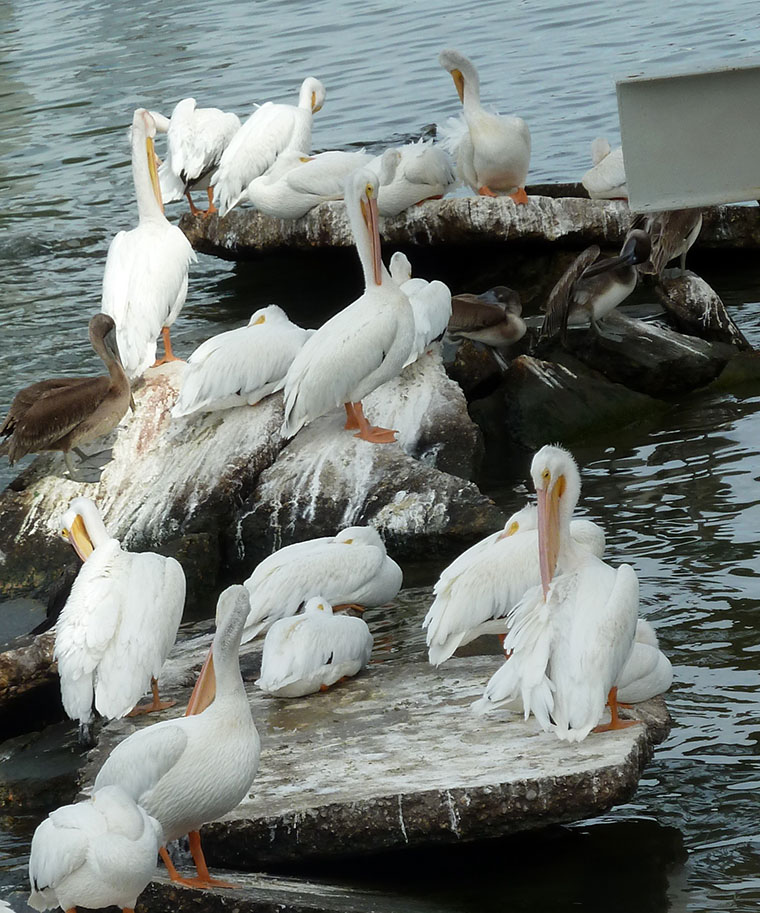Today my target was Galveston, the historic gulf coast port that sits on another of the long chain of narrow barrier islands along the Texas coast. The drive from Victoria to the coast was uneventful and routine except that I passed through the town of Edna, which was my mother’s name, so I added a little tribute to the video to remind me.
The Blue Water Highway runs parallel to the beach along the full length of the island. For most of the way it was about one block from the beach with sand dunes and/or stilted houses in between but, when it gets close to Galveston, it runs right along the beach all the way into town. To see the this aspect of Galveston click here for the map/video page.
Once in Galveston I decided to visit two, very different, museums. The first was the Galveston Seaport Museum which tells the story of the port of Galveston and contains a restored tall ship called the Elissa, This iron ship was built in Aberdeen, Scotland in 1887 and had sailed all over the world, including to Galveston, before later being fitted with steam engines, steadily stripped of its sails and rigging and eventually ending life as a run-down Greek freighter in the 1990s. A shipping historian recognized the pedigree of the vessel, then called the Pioneer, when she was rusting away in a Greek salvage yard. There is a great video in the museum showing the restoration of the Elissa to its full sailing glory and it is currently one of the oldest sailing ships in the world. It is used regularly to train sailors and takes part in special events along the eastern US. The museum itself was a little thin on exhibits but the ship was definitely worth the price of admission.
The second visit was to was the Ocean Star Museum just a couple of blocks away. The Ocean Star was an offshore oil drilling platform that has been converted to a museum about the discovery and exploitation of offshore oil and gas. The displays were excellent and the technology used to discover and tap these reserves is incredible. Offshore oil platforms can now operate in waters as deep as 6,000 feet and I found the techniques used to overcome the challenges fascinating. It is, to a significant extent, very industry friendly which, considering it relies on equipment donations and sponsorship from oil companies, is understandable. However, it does acknowledge accidents, such as the BP Deep Water Horizon explosion, and has one of the undersea machines on display that was used to help seal the leaks.
I like this image, taken from the Galveston shoreline, as it shows shipping, oil exploration and recreation – the three most important economic activities of the area.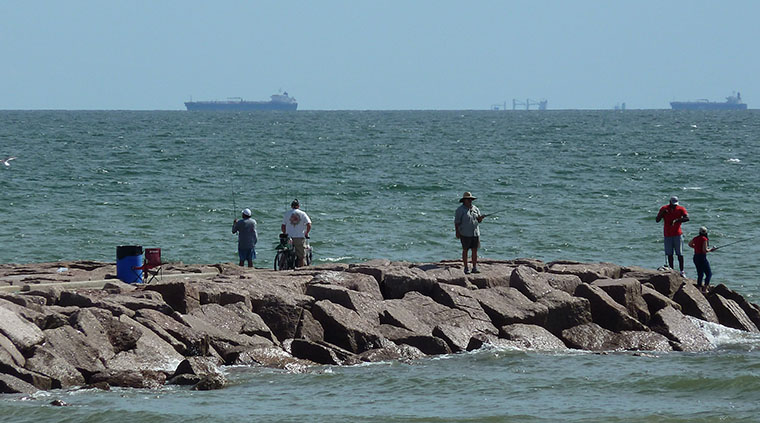
The restored sailing ship, Elissa, in all her glory.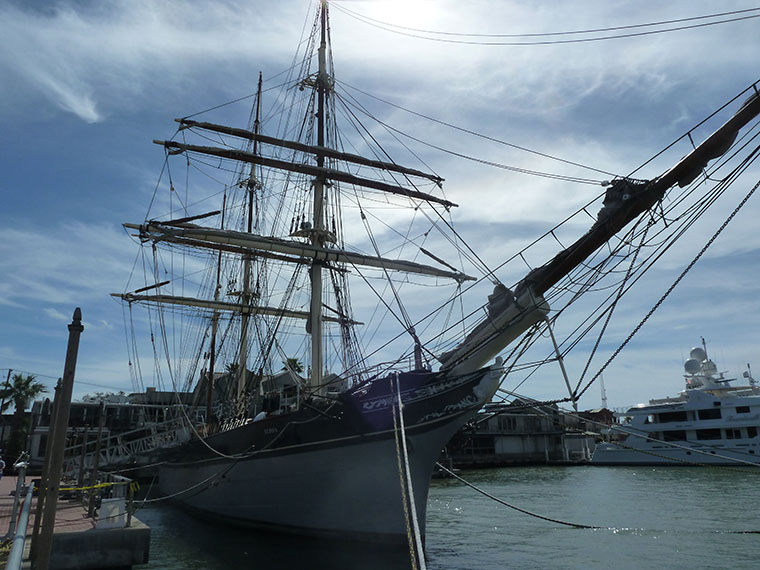
The Ocean Star Museum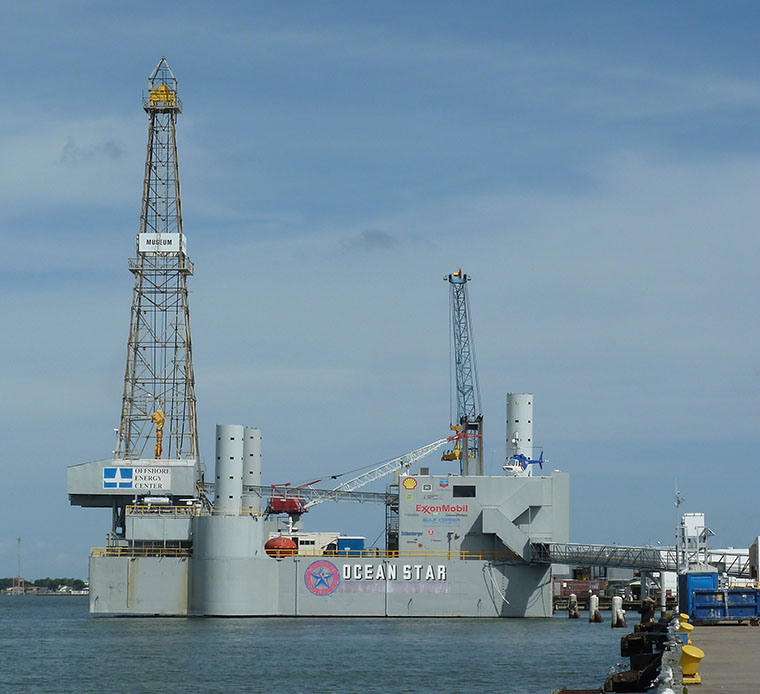
The Ocean Star Museum was once a production platform like these. The legs are lowered to the sea floor and the platform is then jacked up on the legs so it is above the height of hurricane waves.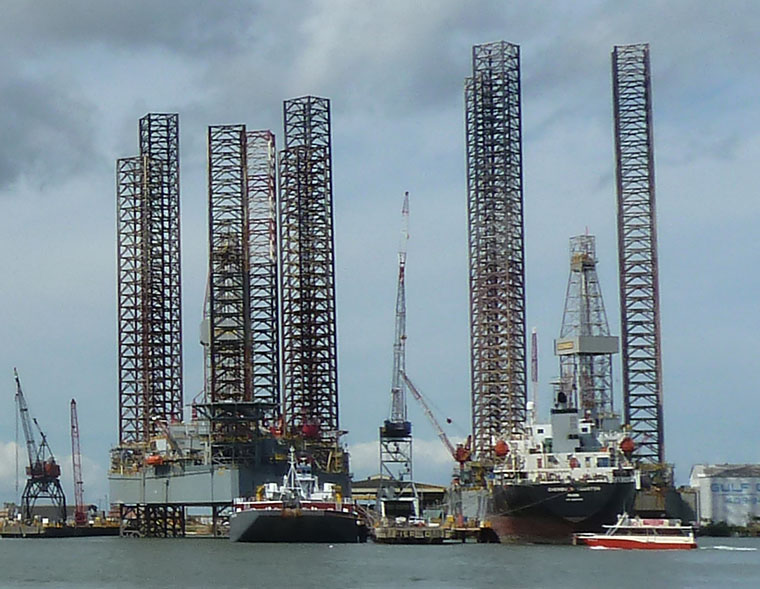
This museum model shows how much of some platforms is below the water level.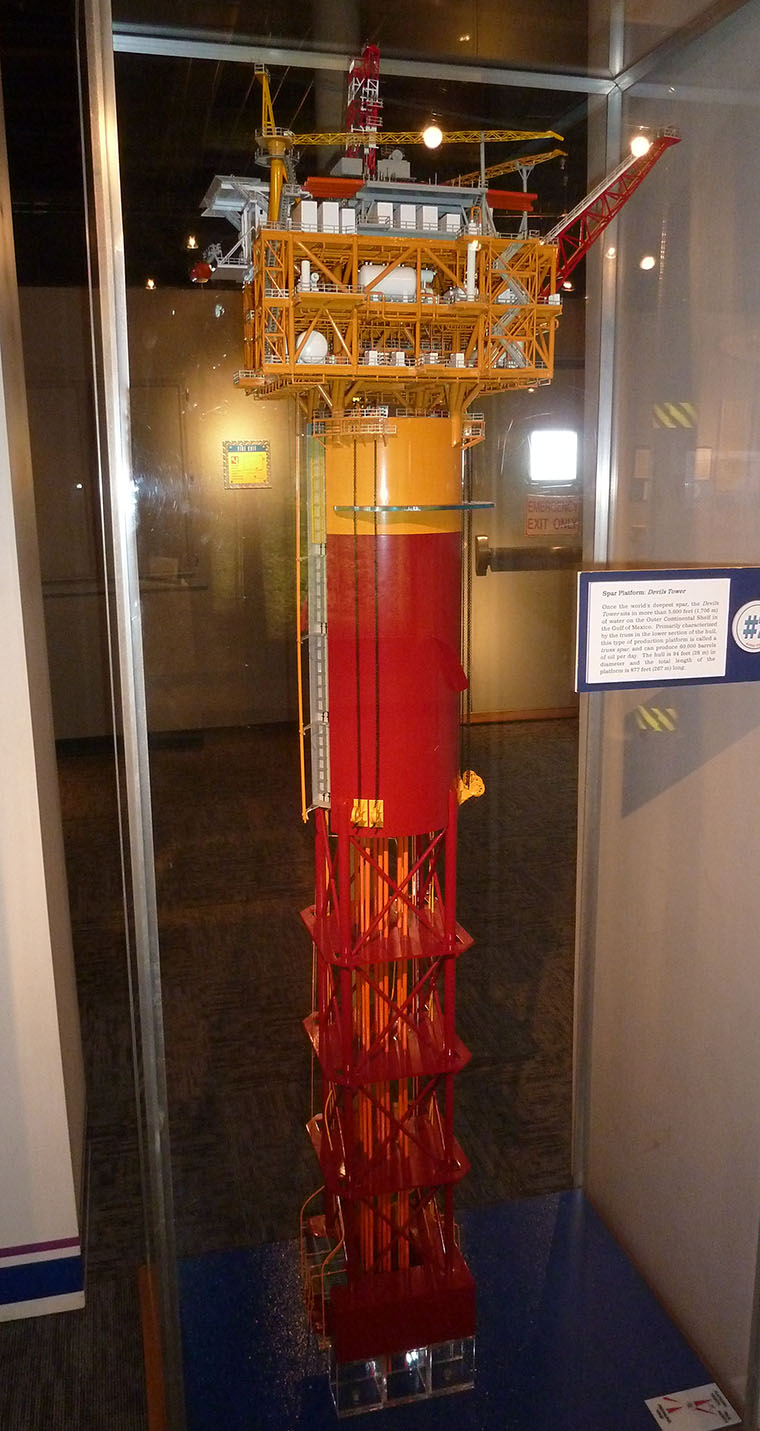
Some pelicans that seem happy at the base of the museum.